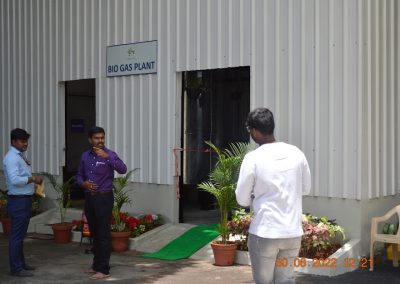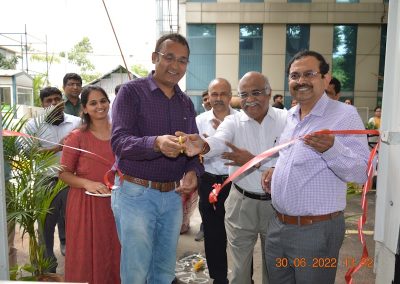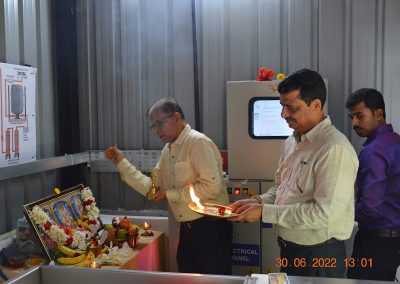Increasingly, the IIIT Bangalore campus is embracing sustainability as it improves the quality of campus life. It is a forward-looking approach to the energy and well-being of the campus community. IIITB can benchmark green initiatives such as the installation of Biogas plant and use them to develop sustainability as an accomplishment parameter towards having a sustainable campus. It is also a step towards making the campus a laboratory for students to learn, innovate and be inspired to become change makers.
The Biogas plant has been installed to convert the organic waste into methane gas(biogas) and bio fertilizers to reduce the dependency on Fossil fuels. A decentralized 100kg capacity of a biogas plant has been installed to make IIIT Bangalore more sustainable. It will generate 10-11 m3 of methane gas per day. With the guidance and support of ELCITA, it was installed recently. Ms. Brunda M, Sustainability Engineer, ELCITA, explains in detail, “The main contain biogas is methane approximately 55 to 65% and carbon dioxide about 30 to 40%. Other than this a very small percentage of ammonia, hydrogen, sulphide and nitrogen is available in biogas. Biogas is having calorific value 5000 to 5500kcal/kg. It is suited for lighting, cooking, drying and fuel for internal combustion engines. Biogas can be produced by fermentation through anaerobic digestion of organic material. The container in which digestion takes place is called digester. A common material used as feedstock is a food waste generated from the IIIT Bangalore canteen.”
Biogas is produced from food waste with 90% water for the action of anaerobic bacteria. Part of the carbon is oxidized and another part is reduced to produce carbon dioxide and methane (CH4). These bacteria live and grow with very less amount of oxygen. The airtight container used for conversion is called a digester. The conversion process is called anaerobic fermentation or bio digestions. The soluble nitrogen compounds known as nutrients are available in solution and produce good quality fertilizer with methane gas.
For a generation of biogas, the chemical process occurs in three stages
|
Scrubbers are used to remove the Hydrogen sulphide and water content. The generated methane gas is stored in the balloon and used in the kitchen for cooking. The quantity of gas generated and utilized is recorded by the Gas Flow meter.





